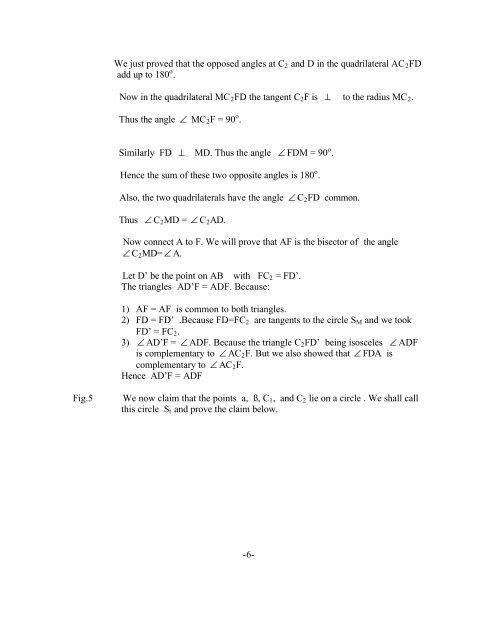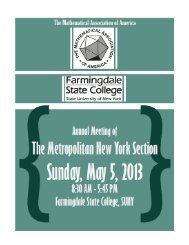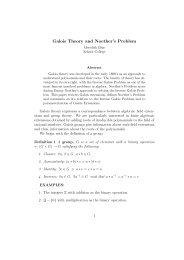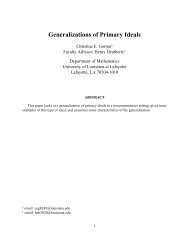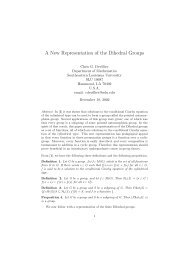Malfatti-Steiner Problem I. A. Sakmar, University of ... - MAA Sections
Malfatti-Steiner Problem I. A. Sakmar, University of ... - MAA Sections
Malfatti-Steiner Problem I. A. Sakmar, University of ... - MAA Sections
You also want an ePaper? Increase the reach of your titles
YUMPU automatically turns print PDFs into web optimized ePapers that Google loves.
We just proved that the opposed angles at C 2 and D in the quadrilateral AC 2 FD<br />
add up to 180 o .<br />
Now in the quadrilateral MC 2 FD the tangent C 2 F is ⊥ to the radius MC 2 .<br />
Thus the angle ∠ MC 2 F = 90 o .<br />
Similarly FD ⊥ MD. Thus the angle ∠ FDM = 90 o .<br />
Hence the sum <strong>of</strong> these two opposite angles is 180 o .<br />
Also, the two quadrilaterals have the angle ∠ C 2 FD common.<br />
Thus ∠ C 2 MD = ∠ C 2 AD.<br />
Now connect A to F. We will prove that AF is the bisector <strong>of</strong> the angle<br />
∠ C 2 MD=∠ A.<br />
Let D’ be the point on AB with FC 2 = FD’.<br />
The triangles AD’F = ADF. Because:<br />
1) AF = AF is common to both triangles.<br />
2) FD = FD’ .Because FD=FC 2 are tangents to the circle S M and we took<br />
FD’ = FC 2 .<br />
3) ∠ AD’F = ∠ ADF. Because the triangle C 2 FD’ being isosceles ∠ ADF<br />
is complementary to ∠ AC 2 F. But we also showed that ∠ FDA is<br />
complementary to ∠ AC 2 F.<br />
Hence AD’F = ADF<br />
Fig.5<br />
We now claim that the points a, ß, C 1 , and C 2 lie on a circle . We shall call<br />
this circle S t and prove the claim below.<br />
-6-


